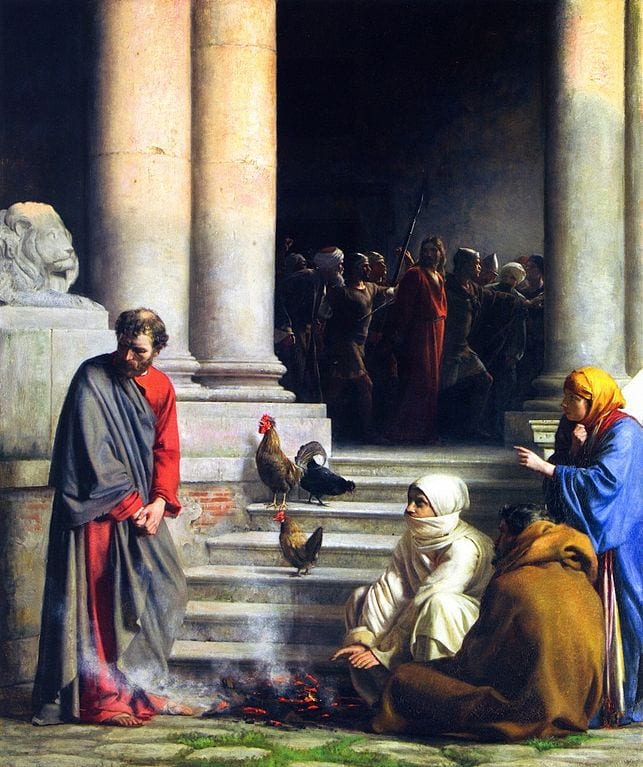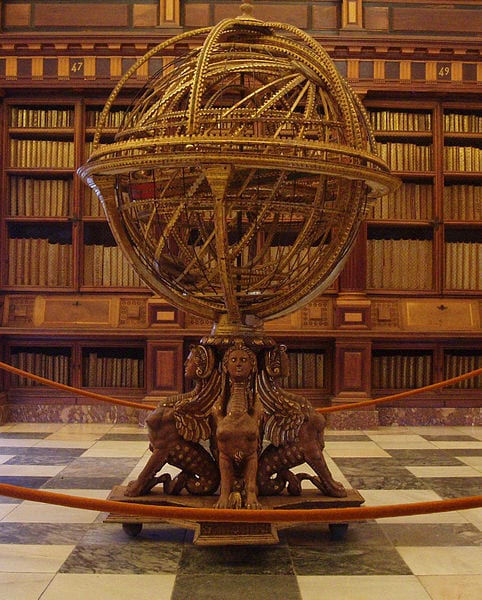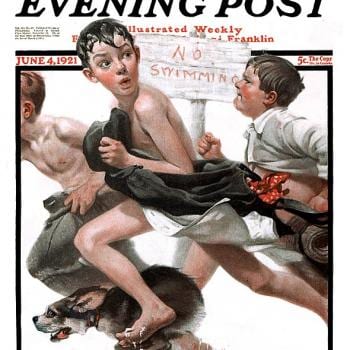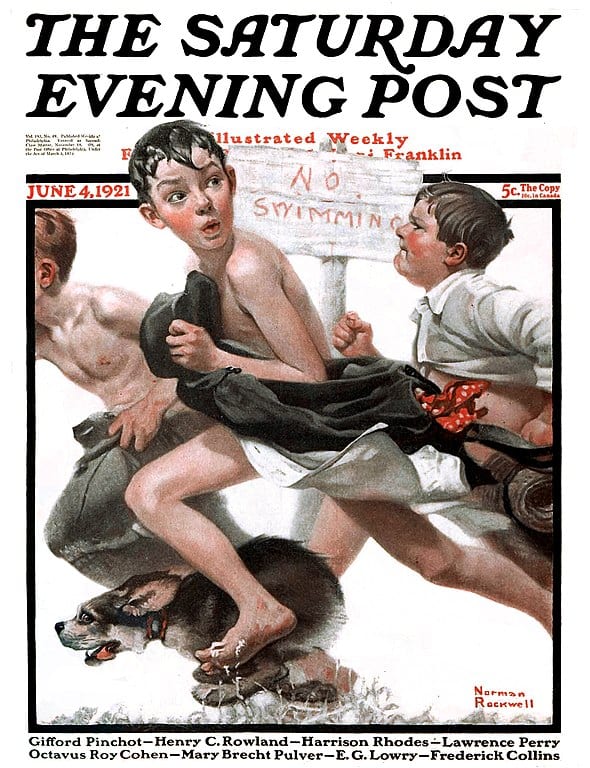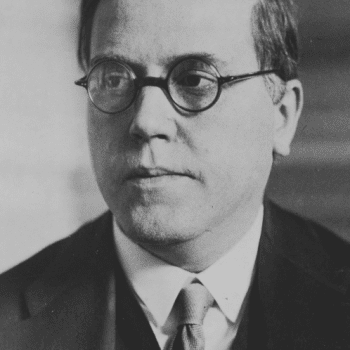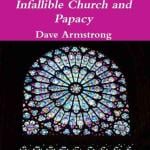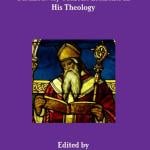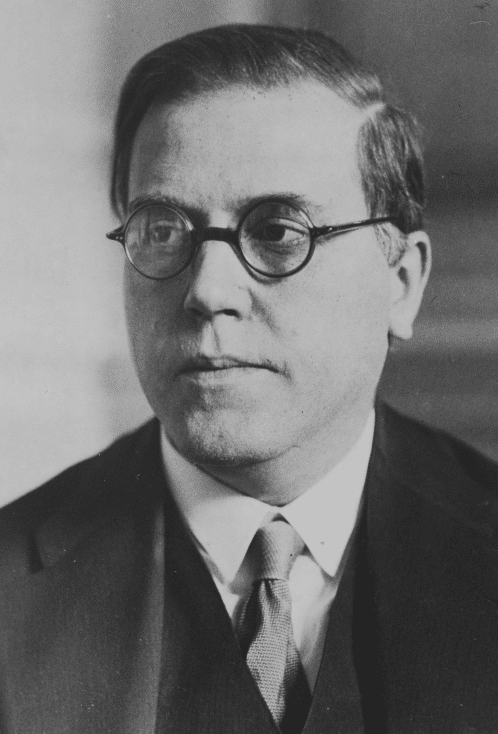
See the previous installments:
Reply to Timothy Flanders’ Defense of Taylor Marshall [7-8-19]
Dialogue w Ally of Taylor Marshall, Timothy Flanders [7-17-19]
Dialogue w 1P5 Writer Timothy Flanders: Introduction [2-1-20]
Dialogue w Timothy Flanders #2: State of Emergency? [2-25-20]
Is Vatican II Analogous to “Failed” Lateran Council V? [8-11-20]
Presently, I am replying to Timothy’s article, “Conservative/Trad Dialogue: Reply to Dave Armstrong” (The Meaning of Catholic, 8-24-20). Timothy’s words will be in blue.
“1P5” = One Peter Five.
*****
First of all, I thank Timothy for yet another cordial, friendly, constructive reply. I can’t adequately express how much I appreciate it: particularly because of the topics we are discussing: where dialogue across any lines at all — however they may be defined — is as rare as hen’s teeth (or maybe the extinct dodo bird). And I am grateful for the articulate, precise way in which he lays out his positions (whether I disagree with them or not). These two characteristics are good for everyone, and help to clarify exactly what it is that is being considered, and to aid readers in coming to their own thought-out conclusions, through the time-honored method of back-and-forth dialogue.
In a recent post you replied to my discussion of some of the fundamental questions at play in the debate about Vatican II on the level of philosophy and the level of history. First I will admit for the sake of the debate that I have not responded with corresponding rigor to your answer of mine regarding Newman, which I thought was a very good reply, so that point is well taken.
Thanks!
But let me summarize your assertions in that article in that Newman appears from your quotes there. He seems to say that he did not mean by “temporary suspension of the teaching Church” that anything absolute happened, but only that the Magisterium in some way was obscured, even though it was still acting in various ways, including a Roman synod. Is that a fair summation?
I believe so. In any event, he didn’t believe that Roman See defected from the orthodox faith in any way, shape, or form (and Vatican I expressly asserts in its ex cathedra definition of papal infallibility that this will never happen).
Another important point in this dialogue is to say that I do not call myself a traditionalist, nor do I call our apostolate traditionalist (please see the explanation why here).
I think that’s good, insofar as I have always thought that the word “Catholic” did not need an additional qualifying term (unless it is “orthodox”). Nevertheless, certainly it can be observed that you move in certain Catholic circles (e.g., One Peter Five / Taylor Marshall) that exhibit distinctive beliefs that (in my opinion) go beyond traditionalist, to the distinct category of “radical Catholic reactionary” (which I coined and carefully defined seven years ago now).
However, I do agree with some basic assertions of the “trad movement,” thus the use of the label in the title for the sake of summation.
So do I, for that matter, but I sharply distinguish that from reactionaries, which go quite a bit further.
In your most recent response, you called me a radical Catholic reactionary in contrast to you as an orthodox Catholic. We already agreed that my confession of faith is almost completely acceptable to you, and we originally proceeded with a shared agreement of those basics.
Your Confession of Faith is fine, excepting the submission to the pope “with caution.” Then if we follow the link you made with those words, we see that you state, “Insofar as Pope Francis manifestly denies the faith, I will resist him.” Again, Vatican I made it very clear (as Dr. Fastiggi explained in your interview with him) that no pope will ever “deny the faith.” God has always, does, and will protect in the future, all popes from doing so, as part and parcel of the dogma of the indefectibility of the Catholic faith.
So you are concerned about a hypothetical that will never in fact, occur (therefore, — logically — it hasn’t with Pope Francis). In the same document it’s made clear that no man can judge the pope; yet you proceed to do so (oblivious to these teachings) in your section III of “Concerning Pope Francis.”
You opposed this understanding in a combox comment, dated 12-19-19:
Regarding Conte and others, such as Where Peter Is, I respond that their thinking is very alien to the Tradition. As Schneider points out, the canon law used to say “No one can judge a pope unless he be a heretic.” Popes have been judged and deposed, even though this is very rare, and saints have opposed popes as well. Moreover, saints and other doctors have entertained the possibility of a heretical pope. . . .
[saints and Doctors, however eminent (including St. Robert Bellarmine), are not the magisterium. Even Augustine and Aquinas have been judged in due course by the Church to be in error on certain matters (fine points of predestination and the Immaculate Conception).]
Conte’s assertion that the pope can never err in matters of faith is untenable. He is explicitly contradicted by Pope Adrian VI. Where is this dogmatized? Rather, this is the outgrowth of the false spirit of Vatican I, which led to ultramontanism.
It’s dogmatized at the highest level of authority in Pastor aeternus (Vatican I). Here are the relevant sections:
[Chapter 4] And because the sentence of our Lord Jesus Christ cannot be passed by, who said, ‘Thou art Peter, and upon this rock I will build My Church,’ these things which have been said are proved by events, because in the Apostolic See the Catholic religion has always been kept undefiled, and her well-known doctrine has been kept holy. [“. . . has always been preserved immaculate and sacred doctrine honored”: p. 614: D #3066] Desiring, therefore, not to be in the least degree separated from the faith and doctrine of this See, we hope that we may deserve to be in the one communion, which the Apostolic See preaches, in which is the entire and true solidity of the Christian religion. . . .
To satisfy this pastoral duty, our predecessors ever made unwearied efforts that the salutary doctrine of Christ might be propagated among all the nations of the earth, and with equal care watched that it might be preserved genuine and pure where it had been received. Therefore the bishops of the whole world, now singly, now assembled in synod, following the long established custom of Churches and the form of the ancient rule, sent word to this Apostolic See of those dangers especially which sprang up in matters of faith, that there the losses of faith might be most effectually repaired where the faith cannot fail. [“where the faith cannot suffer impairment, the injuries to the faith might be repaired”: p. 615: D #3069] . . .
For the Holy Spirit was not promised to the successors of Peter, that by His revelation they might make known new doctrine, but that by His assistance they might inviolably keep and faithfully expound the revelation or deposit of faith delivered through the Apostles. And indeed all the venerable Fathers have embraced and the holy orthodox Doctors have venerated and followed their apostolic doctrine; knowing most fully that this See of Saint Peter remains ever free from all blemish of error, according to the divine promise of the Lord our Saviour made to the Prince of His disciples: “I have prayed for thee that thy faith fail not; and when thou art converted, confirm thy brethren.” [“this See of Peter always remains untainted by any error . . .”: p. 615: D #3070]
This gift, then, of truth and never-failing faith was conferred by heaven upon Peter and his successors in this Chair, that they might perform their high office for the salvation of all; that the whole flock of Christ, kept away by them from the poisonous food of error, might be nourished with the pasture of heavenly doctrine; that, the occasion of schism being removed, the whole Church might be kept one, and resting in its foundation, might stand firm against the gates of hell. [my bolding throughout; see further translation / bibliographical details here)
So perhaps you could clarify why you see me as not orthodox?
I don’t view this in terms of orthodoxy (as I would with “Catholic” liberal dissidents), but rather, in terms of attitudes and “quasi-schism”. Reactionaries are analogous to the schismatic Donatists, not the heretical Arians. But they are not canonically in schism; rather, they exhibit a spirit of schism, such that it may be that they actually go into formal schism in the future (as Dr. Fastiggi has already written about, as regards Abp. Vigano: noting that he may possibly already be in schism).
Where have I ever asserted anything erroneous or heretical or ever said anything that was reactionary? I ask sincerely, as one hoping to be corrected as it is written, The way of life, to him that observeth correction: but he that forsaketh reproofs goeth astray (Prov. x. 17).
You manifest all four distinguishing marks of the reactionary, as I have written about (many times) for seven years now. You make it blatantly obvious and indisputable in your own definition of what you call “traditionalist” in your article, “Is This Apostolate Traditionalist?”:
- The Second Vatican Council is, at its best, a truly Ecumenical Council but an ambiguous experiment which must be overcome if we are to defeat Modernism. At its worst, it is a Modernist conspiracy to overthrow the Church from within.
- The New Mass is, at its best, a valid Mass which gives God glory yet has certain inherent defects which can harm souls. At its worst, it is a Modernist conspiracy to overthrow the Church from within.
- The post-conciliar Magisterium is, at its best, a valid papacy which has defended the faith at times but has permitted the Euro-American Church to be ruined by Modernists.[15] At worst, they are valid popes who attempted to blend—wittingly or unwittingly—the Modernist heresy with the Catholic faith and failed.
This is absolutely classic, textbook reactionary thinking: exactly in line with how I have defined it (as one of the most active critics and observers of traditionalism and reactionaryism: as you kindly noted in your previous reply). It’s so similar to what I have written that it could even pass as a quotation of my own definitions. The only think lacking above is the fourth mark: antipathy to [legitimate] ecumenism: which is actually a dominant sub-theme of #1. So I have to document that elsewhere in your writing, in order for you to be a card-carrying, full-fledged reactionary. I took me five minutes to locate an appropriate citation in a search of your website:
The final method the enemies use is in forcing the Magisterium to issue documents that have no reference to the prior Magisterium on the same topic. Again, this began at Vatican II when, for example, a document was issued on Ecumenism without reference to the prior documents on this subject. This issue has continued with the popes since. (“On the Limits of Papal Infallibility”: June 2019)
This statement is factually untrue, and it is simple to prove it: by recourse to the Decree on Ecumenism (Unitatis redintegratio) and its footnotes, which are comprised of copious references to Holy Scripture (which may be considered “prior magisterium”: being inspired revelation) in 35 out of 42 of the notes. The other seven make reference to previous magisterial conciliar documents (five, referring to five councils: Florence being cited three times) or Church fathers (two: St. Augustine and St. John Chrysostom). Here are the ones referring to prior councils:
15. Cf. 1 Petr. 2, 2S; CONC. VATICANUM 1, Sess. IV (1870), Constitutio Pastor Aeternus: Collac 7, 482 a.
21. Cf. CONC. FLORENTINUM, Sess. VIII (1439), Decretum Exultate Deo: Mansi 31, 1055 A.
23. Cf. CONC. LATERANENSE IV (1215) Constitutio IV: Mansi 22, 990; CONC. LUGDUNENSE II (1274), Professio fidei Michaelis Palaeologi: Mansi 24, 71 E; CONC. FLORENTINUM, Sess. VI (1439), Definitio Laetentur caeli: Mansi 31, 1026 E.
27. Cf. CONC. LATERANSE V, Sess. XII (1517), Constitutio Constituti: Mansi 32, 988 B-C.
38. Cf. CONC. FLORENTINUM, Sess. VI (1439), Definitio Laetentur caeli: Mansi 31 1026 E.
I’ve written many papers about Vatican II-type ecumenism and inter-faith dialogue as seen in the Bible, and also in prior Catholic tradition. St. Thomas Aquinas wrote a lot about it. See:
Ecumenical Gatherings at Assisi: A Defense: Ecumenism in St. Thomas Aquinas (Fr. Alfredo M. Morselli) [8-1-99]
Dialogue: Vatican II & Other Religions (Nostra Aetate) [8-1-99]
Salvation Outside the Church?: Alleged Catholic Magisterial Contradictions & St. Thomas Aquinas’ Views [7-31-03]
St. Paul: Two-Faced Re Unbelief? (Romans 1 “vs.” Epistles) [7-5-10]
“Separated Brethren” Term Before Vatican II (1962-1965) [3-25-13]
How Protestants Can be Brethren in Christ (Christians) and [Partial] Heretics at the Same Time, According to Trent [1-4-14]
Does the Catholic Church Equate Allah and Yahweh (God)? [article for Seton Magazine, 18 June 2014]
Biblical Evidence for Ecumenism (“A Biblical Approach to Other Religions”) [National Catholic Register, 8-9-17]
Ecumenism vs. No Salvation Outside of the Church? (vs. Dustin Buck Lattimore) [8-9-17]
Is VCII’s Nostra Aetate “Religiously Pluralistic” & Indifferentist? [6-7-19]
Vs. Pasqualucci Re Vatican II #2: Unitatis Redintegratio (Salvation) [7-11-19]
Vs. Pasqualucci Re Vatican II #9: Dignitatis Humanae & Religious Liberty [7-18-19]
If I may say, my brother, I do think your labeling of me as a “reactionary” weakens your argument, because you seem to rely on a preliminary criticism of unknown comments of which I have no part, then an attack on a reasoning “as reactionaries do” to critique my argument, without mentioning or addressing the distinctions I made about causality both philosophical and historical.
As I just established beyond all doubt, your views are classic / textbook reactionary ones: as I have carefully defined and analyzed these sorts of thoughts for over twenty years, but most precisely in the last seven, as I sought to lay out a sociological group and category of thinking that was distinct from traditionalists (what used to — broadly speaking — be called “radtrad” or “ultratraditionalist”), but also distinct from movements further to the right on the spectrum: SSPX and sedevacantists. I still call such folks “Catholic” (right in my title, which was very deliberately so) and do not assert that they are canonically in schism.
Of course it’s nothing personal. I hold you in very high regard as a person and fellow brother in Christ and His Church. But I can’t pretend that you don’t believe what you manifestly do: as proven in your own clear words, in your dealings on the same topics I have also analyzed. I think you are sincere (as I grant to virtually everyone), but in error; and I hope to persuade you to forsake these errors in due course, as we (I hope) continue to dialogue. And you hope to persuade me (true dialogue always hopes to follow truth wherever it leads).
And if in the future you persuade me of errors, I believe I am also willing to change my mind, if warranted, as well, just as I have on many major issues in my life (abortion, evangelical conversion, Catholic conversion, contraception, feminism, broad political views, divorce, sexual issues, capital punishment in the last few years, etc.).
The fundamental concept that I was addressing was about your assertion of causality in the fallacy of post hoc ergo propter hoc. I conceded this point, then contrasted the rejection of this fallacy with the skepticism of Hume.
I’m not interested in a strictly philosophical / epistemological discussion: let alone guided by Hume: who is hardly a model of Catholic thinking (and was just barely even a theist, and no Christian at all). I think that diverts from our main topic of the nature of Catholic authority and indefectibility.
I’m happy to go into these different historical instances, but these concepts are the primary assertions I am making. I am attempting to answer the question: is it possible for a Council to fail?
It depends on what you mean. If by that, you mean that the documents contain literal heresy that binds the faithful, I say no: it’s not possible (and this follows from Vatican I, Pastor aeternus, since the ecumenical council must be ratified by the pope, who cannot fall into such error). There are other magisterial pronouncements, no doubt, about conciliar infallibility, and when and how it occurs. Your view is a rejection of the dogma of indefectibility.
If you mean, on the other hand, that many in the the Church (and larger society) did not heed its teachings, then yes, absolutely it can “fail” in this strictly limited sense (indeed, one might reasonably contend that every single one did in this sense). But that’s not the council’s fault. We can just as easily argue that Holy Scripture “failed” due to (all through history) rampant misinterpretation and failure to heed its commands and instructions. Is that the Bible’s fault, though? Of course it is not. Likewise, we cannot blame councils for human beings’ (including Catholics’) sinfulness and stubbornness and willful ignorance.
The position that councils are failing and contradicting themselves all over the place is that of Luther and Calvin and their followers, and all Protestants, who reject infallible conciliar authority. You should pause and reflect upon the seriousness of accepting a view which was central to the Protestant Revolt. This was a key issue that I agonizingly grappled with in my own conversion: how mere men (popes and councils in line with popes) could be granted this extraordinary gift of infallibility. It takes a lot of faith to believe, and I think part of the problem with reactionary thinking is that it simply lacks faith in the power and promises of God. One can’t accept these things with reason alone (another reason why recourse to Hume in these matters is a rabbit trail).
I’m not sure you adequately faced the quote from Ratzinger, which says that the Council did not accomplish its intentions in so many words. I certainly concede that Ratzinger had no mind to reject the Council or assert that the Council was the cause of these things, but in this quote he is saying that the best intentions of the Council did not come about. In other words, the cause of the Council did not produce the desired effect, but the opposite occurred.
This is self-evident, but it doesn’t follow at all that it’s the council’s fault, or that it caused it. You may be more sophisticated in your analysis, but in the case of many, it is indeed a straightforward adoption of the good ol’ post hoc ergo propter hoc fallacy. Such alleged causation would have to be painstakingly proven by recourse to the conciliar texts. You claimed that the council didn’t even address issues regarding the sexual revolution at all. I showed that it did: at considerable length, too. And that revolution wasn’t even in full force yet, so the council actually foresaw what was coming to an extraordinary degree, just as Humanae Vitae remarkably foresaw the tragic results which were to come.
What was the cause of this crisis? I argued that it cannot be the Council on a philosophical level, since every Council is in some way an act of the Holy Spirit. But I said that the Council could be a cause on a historical level, since some Councils simply fail to address the situation adequately. Put another way, it is simply an assertion that we need another Magisterial Act such as an Ecumenical Council or something with binding force, since Vatican II has not worked, nor will it work for the future. This is my thesis. This does not mean that the Council was not an act of the Magisterium, but merely that the Magisterium needs to add some greater act for the situation to be resolved.
You make it sound like all you are saying is “have another council, to further develop the previous one”: which is uncontroversial. But that is hardly consistent with your far more radical statement that I cited above: “The Second Vatican Council is, at its best, a truly Ecumenical Council but an ambiguous experiment which must be overcome if we are to defeat Modernism. At its worst, it is a Modernist conspiracy to overthrow the Church from within.” You hang around folks who believe precisely the “‘worst” opinion about Vatican II.
Your signature was included in the open letter to the most radical reactionary (and now, also rabidly conspiratorial) bishop of all: Archbishop Carlo Maria Viganò, and probably the second most reactionary: Bishop Athanasius Schneider. It includes the following observations:
We are grateful for your calls for an open and honest debate about the truth of what happened at Vatican II and whether the Council and its implementation contain errors or aspects that favor errors or harm the Faith. Such a debate cannot start from a conclusion that the Second Vatican Council as a whole and in its parts is per se in continuity with Tradition. Such a pre-condition to a debate prevents critical analysis and argument and only permits the presentation of evidence that supports the conclusion already announced. Whether or not Vatican II can be reconciled with Tradition is the question to be debated, . . .
The Council and Its Texts are the Cause of Many Current Scandals and Errors . . .
Archbishop Viganò has argued it would be better to altogether “forget” the Council, . . .
Then you write: “a new Magisterial Act—analogous to Trent and its anathemas—is necessary to address the crisis.” I would say that papal encyclicals in the last fifty years have been doing an excellent job. But there will be another council eventually. It was 92 years between Vatican I and II, so if that model applies, Vatican II would be around 2057 (when I would be 99!). Simply having another ecumenical council is not something we need to argue about. The only question is when to call it. That was true all through history: not just with the analogy to Lateran V.
Councils and Magisterial Acts are generally called to address a current crisis. The real crisis (the sexual/Marxist/Feminist revolution) erupted after Vatican II. Therefore Vatican II cannot address the crisis which did not exist at the time of the Council. It would be similar to Catholics saying we should not call Trent to address Protestantism because we already have Lateran V. Or Catholics asserting we should not call Ephesus because we already have Nicaea.
Marxism can hardly be said to be a post-Vatican II phenomenon, though the sexual revolution / abortion genocide clearly was. But granting your statement, why, then, are reactionaries so insistent on blaming Vatican II for virtually every problem in the Church and society? You nuance it here, under pressure of my criticisms, but that ain’t the usual pattern (even in your own past statements). It’s strongly implied that Vatican II itself is the cause in these portions of the Open Letter:
. . . the Second Vatican Council and the dramatic changes in Catholic belief and practice that followed . . . The event of the Second Vatican Council appears now more than fifty years after its completion to be unique in the history of the Church. Never before our time has an ecumenical council been followed by such a prolonged period of confusion, corruption, loss of faith, and humiliation for the Church of Christ.
But why would you desire an ecumenical council now: with a pope whom you think is (let’s say) “very problematic” and bishops who are regularly pilloried by reactionaries, as well. Karl Keating (not a reactionary) has even stated that they should “all” resign. I’m not sure if he meant all of the bishops in the world or just in the United States. These are the people who would be voting on conciliar documents.
My argument is the same as Dietrich von Hildebrand. He pleaded with St. Paul VI to condemn heresies, even drafting condemnations himself and giving them to him, but Papa Montini refused saying it was “too harsh.” The charitable anathema, as Hildebrand argues in the book of the same name, is the solution to our times as it has been for centuries. Nevertheless, this method was refused not only by Pope St. Paul VI, but also St. John Paul II and Benedict XVI, and certainly by Pope Francis. Moreover, this time-proven yet abandoned pastoral method was used effectively by two other saintly popes–Pius IX and Pius X–the latter of which was canonized by Ven. Pius XII specifically as a model for our times immediately before the Council (which is why Pius XII canonized him in a rush job). The traditionalist argument boils down to the assertion that Vatican II is inadequate to address the situation, and something traditional must address it: the charitable anathema, which has already proven effective in our times against what you admit is the greatest problem right now: Modernism.
Here I actually agree with you (shock! gasp!!). I think “the law should be laid down,” and rather forcefully. Recently I conceded that the traditionalists have been correct in calling for this approach for some time. I noted that the “strategy” of the Church of being more tolerant (itself borne out of the fear of schism: which was why St. Paul VI was reluctant) has been a manifest abject failure, and that it was time to go back to the approach of Pope St. Pius X: “kick the bums out” as it were. Here is what I wrote on 1-26-19:
I think a good case can be made now that the traditionalist (not reactionary) complaint that too little was and is being done about heterodoxy and dissenters (and abusers, as it were) in the Church was correct, and that we should have cleaned house long ago.
I know why it wasn’t done. I’ve written about it (way back in 2002). It was fear of schism, which was very real after Humanae Vitae in 1968. But in retrospect, in my opinion I think that was the wrong (though quite well-meaning) approach.
Servant of God Fr. John A. Hardon (my mentor) was an adviser to Pope St. Paul VI, and he said that Paul VI felt like he had a crown of thorns on his head: so much did he suffer from the dissent.
Of course he did. But the question (hindsight is 20-20) is what to do about it. I say that the Church didn’t do enough, and that’s a large reason why we’re in the mess we’re in. Most of the abuses in question occurred long before Francis was pope: even before St. John Paul II was pope.
The liberals have been wreaking havoc, and the Church didn’t sufficiently crack down on them. That’s my present opinion, based on hindsight: “we tried x; now it is evident that x has failed, if we look at the fruit.” The problem wasn’t Vatican II. The problem was allowing the liberals who distorted Vatican II to run wild. But of course I could be wrong.
I think another major factor is also the human tendency to be men-pleasers, which has often afflicted our bishops, per the classic 1995 article by James Hitchcock: “Conservative Bishops, Liberal Results.”
Personally, I’ve never had nothing but pure, utter disdain for the views of Catholic dissidents and liberals and modernists and so-called “progressives”. That’s been made abundantly clear in my writings. I think they are fundamentally dishonest and oftentimes deliberately devious and deceptive, and with nefarious intentions. I refer mainly to the big shots, not necessarily every individual: many of whom are simply ignorant.
How specifically to deal with dissenters and heterodoxy, however, is a separate issue, where equally good Catholics can and do disagree. I suspect now that the Church has been far too lenient, and that this was a huge prudential misjudgment and grave mistake, in retrospect. “Hindsight is 20-20.” But we must learn from our well-meaning mistakes. (“Catholic Sex & Heterodoxy Scandals: Long-Term Causes”)
As a corollary, as Hildebrand also argued, the New Mass has fundamental problems in its Latin texts in weakening the Tridentine emphasis on the Real Presence. Thus it failed to create a renewal, but rather the opposite occurred.
Here again, you assume this without proving it, and blame the new Mass rite for lessening belief in the Real Presence (and who knows what else?). It’s simply not that simple. Loss of faith comes from a host of reasons and cannot be generalized about in this fashion. Von Hildebrand (whom I wrote about at length in 2002) did severely criticize the New Mass, but he also stated:
[I]t goes without saying that it would also be completely wrong to disobey any of the rulings of the Holy Father regarding the Novus Ordo and the Tridentine liturgy (cf. the passage from Vatican I I quoted in footnote 78-a, regarding the obedience which Catholics owe the Pope even in those practical matters where they are entitled to disagree with the judgment of the Pope). (The Devastated Vineyard, Harrison, New York: Roman Catholic Books, rep. 1985 [orig. 1973], 73-74)
It is so reactionary to say we should try something different at this point? You seem to assert that it is. Hildebrand argued that the New Mass should be abrogated and the Tridentine restored. This is not a schismatic, reactionary, irrational Pharisee assertion, as you forcefully assert, but a respectful plea to Holy Mother Church to use more effective means of saving souls—the anathema and the Latin Mass—means which have already proven themselves effective over centuries.
The Tridentine Mass has been restored (in 2007), and I favor it being even more widely available, according to the level of demand for it (petitions to bishops, etc.). I think that is the solution: allowing “liturgical diversity” but not eliminating the (fully defensible from tradition) Pauline Mass, which would simply be an act similar to how the Old Mass was in effect “suppressed” (though not formally). I favor the “reform of the reform” just as Pope Benedict XVI does, and I defend that against critics like Peter Kwasniewski.
Perhaps you could clarify: do you regard Hildebrand as a traditionalist or a reactionary according to your definitions of those terms? My thought is greatly influenced by Von Hildebrand who, in my view, provides the most convincing arguments of any other writer in the 20th century crisis.
As I noted, I wrote at length about him and his traditionalist views in 2002. You couldn’t have been influenced by him with regard to Vatican II, because he loved it:
When one reads the luminous encyclical Ecclesiam Suam of Pope Paul VI or the magnificent Dogmatic Constitution on the Church of the Fathers of the Council, one cannot but realize the greatness of the Second Vatican Council . . . Indeed, it would be difficult to conceive a greater contrast that that existing between the official documents of Vatican II and the superficial, insipid pronouncements of various theologian and laymen that have been breaking out everywhere like some infectious disease. On the one side, we find the true spirit of Christ, the authentic voice of the Church; we find texts that in both form and content breathe a glorious supernatural atmosphere [hmmmm: no hint of modernist co-opting of the Council and “ambiguity” in this description]. On the other side, we find a depressing secularization, a complete loss of the sensus supranaturalis, a morass of confusion. (Trojan Horse in the City of God: Chicago: Franciscan Herald Press, 1967, p. 3)
He speaks of “The distortion of the authentic nature of the Council that this epidemic of theological dilettantism produces . . . ” (pp. 3-4). He goes on:
[T]here is a third choice, which welcomes the official decisions of the Vatican Council, but at the same time emphatically rejects the secularizing interpretations given them by many so-called progressive theologians and laymen. This third choice is based on unshakable faith in Christ and in the infallible magisterium of His Holy Church . . . This is simply the Catholic position . . . It should be clear that this third response to the contemporary crisis in the Church is not timidly compromising, but consistent and forthright . . . .
The response we have been describing involves grave concern and apprehension over the present invasion of the life of the Church by secularism. It considers the present crisis the most serious one in the entire history of the Church [as I often heard the late Fr. John A. Hardon say]. Yet it is full of hope that the Church will triumph, because our Lord Himself has said: ‘And the gates of Hell shall not prevail against it.’ (Ibid., 5-7)
This is precisely the position of Pope St. John Paul II, Pope Benedict XVI, and myself, and it should be that of all Catholics. I don’t classify Dietrich von Hildebrand as a reactionary because he doesn’t trash Vatican II. I wrote in 2002 (I only changed the original fourth word to “reactionary” when I re-uploaded it this year):
[T]hings in the reactionary camp have moved radically to the right since 1967 (sort of a parallel to the most exclusivistic form of Protestant Fundamentalism). Now the Council is not dead-set against the liberals, nor does it represent “the true spirit of Christ, the authentic voice of the Church.” Rather, it is itself liberal, and the root of the problem (at least in large part)!!! It is “ambiguous” and shot-through with “modernist” theology. How different from the position of Catholic traditionalist von Hildebrand!
If I have misunderstood your argumentation please correct me, brother.
You seem to continue to misunderstand how I define reactionary. Hopefully, you won’t, after this reply. Being willing to be corrected is an admirable attribute.
Also, I admit my historical assertion about Lateran V and indulgences was made for memory, and I may have confused Lateran V with Lateran IV in that regard (these are corrections I definitely appreciate).
Thanks for this humble admission as well. Perfectly understandable mistake . . .
I look forward to more conversation brother, and I hope you and your family are well.
That is my hope and wish as well, and blessings and best wishes to you and yours also.
***
Photo credit: Dietrich von Hildebrand (1889–1977), German Roman Catholic philosopher and theologian [public domain / Wikipedia]
***
